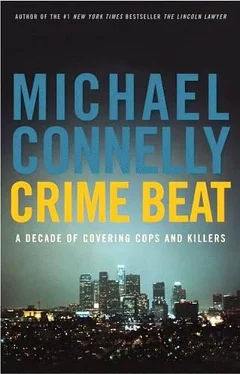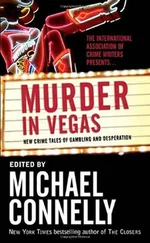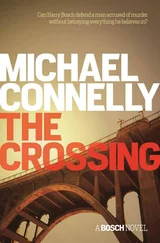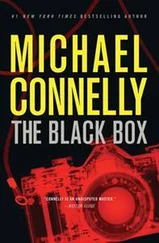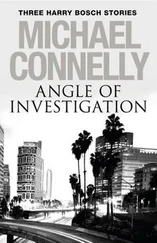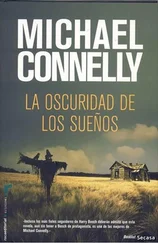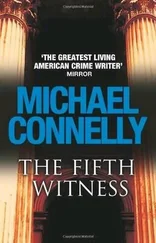On the surface, Connelly breaks no new ground. He writes well and cleanly, but look carefully and you’ll see how it goes beyond clean. His prose style is, in fact, an outgrowth of his reporting, hard-boiled without being cynical.
In the 1930s many people compared Hammett to Hemingway, often suggesting Hammett was there first with hard-boiled prose. This was unfair to Hemingway, because In Our Time is crafted with a bare purity that has rarely been matched. Hemingway attributed that purity to learning “cable-ese,” the pared-down prose necessary to save on the cost of wiring his reporting back to the paper at home. But neither writer has the raw, hardboiled quality of Paul Cain’s Fast One or Raoul Whitfield’s Green Ice. Look elsewhere in Hemingway or at some of Hammett and you’ll find prose crafted in an almost romantic manner, because they refuse to submit completely to cynicism; they’ve seen too much of reality for that.
Connelly decided to become a crime writer after seeing Robert Altman’s cynical version of The Long Goodbye and turning to Chandler ’s novels, which he devoured one by one. At the University of Florida, he studied creative writing with the novelist Harry Crews. Although he claims Crews’ lifestyle and his success as a writer were more of an influence than his style, I see elements of Crews’ darkness, somewhere between Southern gothic and theater of the absurd, in Connelly’s fiction. I also see, in Harry Bosch, a very Crewsian figure, out of place in his world, and stretched to breaking point trying to make himself fit.
Bosch is the catalyst that allows Connelly to perform the trick of turning reality into fiction. The art of writing good hard-boiled prose requires a certain detachment, the ability to not let the runny emotional yolk of a story break free.
But it doesn’t have to be boiled within the shell. The closest comparison I can make in crime fiction is with Ross MacDonald, whose Lew Archer is an observer of social change, almost a reporter, and whose prose brings the reader a clear perspective on what Archer sees, freed of cynicism and ornamentation.
This is exactly the sense in which I think of Michael Connelly as a hard-boiled writer, and one of the most successful. He has been able to achieve that detachment without losing the emotional center, without sacrificing empathy. He is able to sustain a paradoxical sense of distance and involvement in his fiction – like a reporter, sharing the experience of cops without becoming one himself, balancing the grief of victims, the nature of victimizers, the frustrations of cops. He learned to do it in the pieces collected here.
Perhaps you noticed I began this essay by saying Michael Connelly is a reporter. Not was a reporter. Is.
The would-be novelist stuck in a career as a newsman is an old cliché. I don’t see Michael ever being stuck. I don’t know if he went to his first crime scene and gathered his notes with the idea of finding material for his books. You will certainly see in these stories the raw materials – the crimes, the criminals, the cops and the city – that make up his fiction. But what these pieces do show is that Connelly was a hell of a good reporter. And that being a hell of a good reporter was a great start for becoming a hell of a good novelist.
Michael Carlson was born in New Haven, Connecticut, and lives in London with his wife and son. He has written about Michael Connelly for the Spectator, Daily Telegraph, Financial Times, Perth (Australia) Sunday Times, Shots and Crime Time, where he also edits the film section. His studies of the directors Sergio Leone, Clint Eastwood and Oliver Stone were published in the Pocket Essentials series.
The stories contained in this collection all carried the byline of Michael Connelly but without exception they were all labored over by numerous editors, copyeditors and fellow reporters. It is impossible to write a newspaper or magazine story without the input of many. I wish to thank all of those who helped make these stories fit to print.
I also wish to thank Michael Pietsch, Asya Muchnick and Pamela Marshall for their more recent work in making the stories suitable for reprinting here. And last but not least, special thanks to Steven Vascik of SCV Publications for first gathering and publishing this collection.
PERMISSIONS
We are grateful to the South Florida Sun-Sentinel and the Los Angeles Times for permission to reprint the following previously published stories.
SOUTH FLORIDA SUN-SENTINEL
WILDER CHARGED WITH SLAYING HOUSEWIFE Copyright © 1984. Reprinted with permission of South Florida Sun-Sentinel.
WILDER LED DOUBLE LIFE IN SOUTH FLORIDA Copyright © 1984. Reprinted with permission of South Florida Sun-Sentinel.
WILDER VICTIMS STILL MISSING 1 YEAR LATER Copyright © 1985. Reprinted with permission of South Florida Sun-Sentinel.
IDENTITY OF MURDER VICTIM STILL SHROUDED IN
MYSTERY Copyright © 1986. Reprinted with permission of South Florida Sun-Sentinel.
THE MOB SQUAD Copyright © 1987. Reprinted with permission of South Florida Sun-Sentinel.
BILLY THE BURGLAR Copyright © 1987. Reprinted with permission of South Florida Sun-Sentinel.
THE MAIL-ORDER MURDERS Copyright © 1987. Reprinted with permission of South Florida Sun-Sentinel.
LAUDERDALE HOMICIDE Copyright © 1987. Reprinted with permission of South Florida Sun-Sentinel.
LOS ANGELES TIMES
PORTRAIT OF A MURDER SUSPECT
Copyright © 1987, Los Angeles Times. Reprinted with permission.
TARZANA MAN HELD IN MURDER OF HIS MISSING FATHER
Copyright © 1987, Los Angeles Times. Reprinted with permission.
LAPD FOREIGN PROSECUTION UNIT
Copyright © 1987, Los Angeles Times. Reprinted with permission.
SAKAI FOUGHT KILLERS
Copyright © 1988, Los Angeles Times. Reprinted with permission.
MURDER CASE
Copyright © 1988, Los Angeles Times. Reprinted with permission.
ROOKIE OFFICER DIES IN STRUGGLE FOR GUN
Copyright © 1988, Los Angeles Times. Reprinted with permission.
DEATH FOR DEATH
Copyright © 1988, Los Angeles Times. Reprinted with permission.
1,000 ATTEND RITES FOR SLAIN ROOKIE OFFICER
Copyright © 1988, Los Angeles Times. Reprinted with permission.
4 MEN ARRESTED IN LAKE VIEW TERRACE QUADRUPLE KILLING
Copyright © 1988, Los Angeles Times. Reprinted with permission.
DRUG RING KINGPIN CALLS THE SHOTS FROM PRISON, POLICE SAY
Copyright © 1988, Los Angeles Times. Reprinted with permission.
AMBUSH SHOOTING
Copyright © 1989, Los Angeles Times. Reprinted with permission.
WHO SHOT VIC WEISS?
Copyright © 1989, Los Angeles Times. Reprinted with permission.
‘COTTON CLUB’ CASE LED TO ARREST IN ’84 SLAYING OF PROSTITUTE
Copyright © 1989, Los Angeles Times. Reprinted with permission.
SUSPECT REMAINS AT LARGE ALMOST 2 YEARS AFTER HIS FATHER’S SLAYING
Copyright © 1989, Los Angeles Times. Reprinted with permission.
MURDER OF KANAN HEIR REMAINS A MYSTERY
Copyright © 1990, Los Angeles Times. Reprinted with permission.
POLICE SURVEILLANCE UNIT KILLS 3 ROBBERY SUSPECTS
Copyright © 1990, Los Angeles Times. Reprinted with permission.
MICHAEL BRYANT’S DOUBLE LIFE
Copyright © 1990, Los Angeles Times. Reprinted with permission.
NEPHEW IDENTIFIED AS SOLE SUSPECT IN KANAN KILLING
Copyright © 1990, Los Angeles Times. Reprinted with permission.
DAUGHTER SAYS FATHER, WIFE HE’S ACCUSED OF KILLING HAD ARGUED
Copyright © 1991, Los Angeles Times. Reprinted with permission.
TRIAL ORDERED FOR MAN ACCUSED OF KILLING WIFE, BURYING HER IN YARD
Читать дальше
